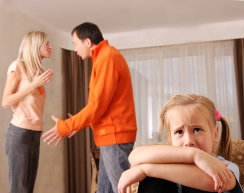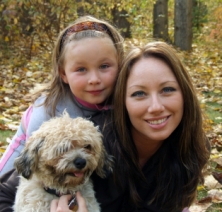Please view our informational articles on addiction and mental health topics below.

Articles
What Treatment Coordination and Advocacy Suggests You Ask When Choosing a Treatment Center
Amy Lashway, MA, LPC, NCC
 With so many options in treatment available these days, choosing the best possible clinical fit in a treatment center can be a complicated process, even for mental health and addiction professionals. This is one reason why Treatment Coordination and Advocacy offers a treatment placement service in which we serve as the Treatment Coordinator for clients and their families, taking the leg work and as much stress away from the client’s and their families as possible.
With so many options in treatment available these days, choosing the best possible clinical fit in a treatment center can be a complicated process, even for mental health and addiction professionals. This is one reason why Treatment Coordination and Advocacy offers a treatment placement service in which we serve as the Treatment Coordinator for clients and their families, taking the leg work and as much stress away from the client’s and their families as possible.
The following is a list of questions I ask when interviewing treatment centers and choosing a treatment program for my clients, please feel free to share:
- What is the total cost including all ancillary charges such as medications, psychiatric visits, room and board, transportation, family programs and psychological testing, massage, acupuncture, detox, family program? Will the client be facing a lot of unanticipated fees?
- What is your refund policy?
- Do you take insurance as a form of payment? If not, but you help seek reimbursement, is your UR department very aggressive in that area?
- How many clients can you accommodate at one time, what is your current census and what are the current ages of your clients?
- What does your pre-admission screening consist of and how will I know if my client is a good fit for your program?
- What is the client to staff ratio?
- How many hours of individual therapy or counseling do clients receive each week?
- How many hours of group psychotherapy (groups led by doctors, therapists or credentialed drug and alcohol counselors) do clients receive each week?
- How many hours of additional therapeutic activities do the clients receive each week (recreational outings, yoga, meditation, 12-step, exercise)?
- What is the therapeutic orientation or philosophy of your program?
- What therapeutic modalities are available to your clients (DBT, Motivational Interviewing, art therapy, psychodrama, Somatic Experiencing, EMDR, spirituality, 12-steps, etc.)?
- What are some of the topics/issues addressed in the psychotherapy groups and what are the credentials of the staff who lead them?
- What are the qualifications and training of your clinicians, psych techs or milieu counselors?
- How soon after admission do clients see the psychiatrist and how often are they seen for follow up appointments?
- If this is an addictions program, is your psychiatrist and Medical Director an addictionologist?
- How do meals work? Can you accommodate special diets?
- How many clients per room?
- Is there 24 hour staff supervision?
- What is the minimum, average and maximum length of stay?
- Are 12-step meetings required? If so how many per week and are clients required to get a temporary sponsor?
- How is your program licensed or accredited?
Of course, there are many other possible questions, but these are good to start with. I encourage my clients to ask each program the same questions so they can truly compare apples to apples. Proceed with caution if the intake specialist is unable to answer these questions specifically or unwilling to direct you to someone who can. I am also cautious about programs that do not offer a preliminary pre-admission assessment that looks at dual diagnosis issues and acuity.
If you or a loved one is in need of residential treatment and you would like help in finding the best treatment center for their needs from clinical, personality, geographical and financial standpoints, consider referring them to Treatment Coordination and Advocacy. We work collaboratively with referents to offer the most seamless process possible.
Eco-psychology: Why Does Adventure Therapy Work?
Susannah Garrett, BA
 Eco-psychology is a relatively new field of psychology which explores the human relationship with Nature. Laurie Tarken, a well known health journalist, defines eco-psychology as the study of the relationship between “the human psyche and the natural environment”. Eco-psychology is based on the premise that people are bonded to nature in the same way they are bonded to their families.
Eco-psychology is a relatively new field of psychology which explores the human relationship with Nature. Laurie Tarken, a well known health journalist, defines eco-psychology as the study of the relationship between “the human psyche and the natural environment”. Eco-psychology is based on the premise that people are bonded to nature in the same way they are bonded to their families.
Eco-psychologists believe that grief, despair and anxiety are the consequences of dismissing deeply rooted ecological instincts. In the last generation our reliance on technology has increased as we move further away from a direct rapport with nature.
Eco-psychologists believe that grief, despair and anxiety are the consequences of dismissing deeply rooted ecological instincts. In the last generation our reliance on technology has increased as we move further away from a direct rapport with nature.
Recently there have been a number of studies done on the study habits of college student measuring the influence of multi-tasking and focus. As they listen to their professor lecture, college students today are surfing the net, checking their social networks and instant messaging in both Facebook and Google, with their Iphones buzzing to signal the next incoming text or tweet. The brain can keep up, but it has become dependent on the flooding of stimulation in order to track. With this heightened field of stimulation multitasking feels natural, but studies show that information overload impairs focus, learning, and memory. What presents is a culture of moderate to severe attention deficit disorder. The Native Americans call this “Hurry Up Sickness.”
By disconnecting from our natural environment, we have become strangers to the natural world – our own world. This has challenged our sense of identity and in some more subtle ways has had a significant affect on our mental health. Recent studies have shown that spending time outside in a natural environment can be regenerating and restorative.
There are several key concepts in eco-psychology, one of them being biophilia.The biophilia hypothesis describes the existence of a genetically-based human need to affiliate with nature. E. O. Wilson, the Harvard biologist who proposed this hypothesis defines biophilia as “the innately emotional affiliation of human beings to other living organisms. There is a human dependence on nature that extends far beyond the simple issues of material and physical sustenance; it includes the human craving for aesthetic, intellectual, cognitive, and even spiritual meaning and satisfaction.” With this hypothesis come some bold assumptions; the need to connect with nature is:
- Biologically based
- Part of our species’ evolution
- Part of giftedness
- Likely to increase the possibility for achieving individual meaning and personal fulfillment
- A motivating influence in the conservation of nature
Adventure therapy encompasses many aspects of eco-psychology. It brings the natural world into the psychotherapeutic process. It creates opportunities for direct contact with nature. Some of these experiences include:
- Mindful Sensory awareness of the natural world
- Animal-Human communication e.g. Equine Therapies
- Place Bonding
- Wilderness Retreats, adventure counseling
- Ropes courses
- Vision Quest
- Sweat Lodge
- Story Telling
- Art Therapy
- Talking Stick
- Trust-building exercises
Ropes courses have become popular in adventure therapy. By directly engaging a core fear such as fear of heights in supportive way, a well-run ropes course can be a significant and even transformative experience giving rise to a greater capacity for handling fear-type reactions in other settings. As part of our genetic makeup, humans have an innate inclination to climb into trees and move in heights and there can be a profound satisfaction with this process of overcoming these basic fears.
In the Wilderness experience, guides take groups of people into the woods for a week or two with the bare minimum of supplies. It forces the participants to use their five senses to work through their problems and often shakes them to the core in the process. As they move into their bodies, away from their heads, the metaphors for healing are in nature; Nature becomes the guide – Nature becomes the healer.
The use of trees and animals are a fundamental part of adventure therapy and ecotherapy. Building a relationship with an animal is very rewarding in many respects. For a person with an emotional, social or psychological disability, the trust and loyalty of an animal demonstrates to the person how important they are and that they may extend these attributes to personal relationships. The use of animals in therapy has been around for quite sometime. Creating a relationship with an animal whether it is dog, cat, bird, rodent, or reptile is a way of relating to the non-human world. It requires “a body-centered” sensitivity.
We are physical beings in a natural world. Adventure therapy works because it deepens the experience of “body” in the world. It conditions the five senses and it heightens our physical and emotional experience of nature. Facing the fear and vulnerability of our relationship with nature builds self esteem. This re-bonding with nature repairs our sense of basic trust. Fireside storytelling is the original therapy, bringing the whole community into therapy. In the silence of the night, with the crackling fire centered before us, we listen and respond to each other. If someone is in pain and needs help, the group supports them. Health is a group effort. It is a community experience.
We learn to have relationships and rely on each other in a deep, meaningful way, the way nature relies on itself. Adventure therapy works because it is simple and it is natural, and the results are profound.
Do Compulsive Gamblers Ever Make Money Gambling?
Arnie Wexler, Gambling Addiction Interventionist
 Compulsive gamblers sometimes show a profit from a single session but in the end they cannot keep it. They will lose it all and more, because of their addiction.
Compulsive gamblers sometimes show a profit from a single session but in the end they cannot keep it. They will lose it all and more, because of their addiction.
A win is never big enough so they keep playing and dream that this time they will get the “Big Win” they crave. When it does (sometimes it does) it is still not enough so they keep gambling and lose more.
Just like “normal people” who win and buy something with the money, the compulsive gambler will only see a win as a sign that they are now on a winning streak so they risk more. They cannot stop the chase to win more and more. The human drama continues when they lose and chase the losses with even more money. The cycle continues.
Compulsive gambling is a progressive disease, much like an addiction to alcohol or drugs. In many cases, the gambling addiction is hidden until the gambler becomes unable to function without gambling. He or she begins to exclude all other activities from their lives. Their ability to stop gambling often results in financial devastation, broken homes, employment problems, criminal acts and suicide attempts.
The gambler will eventually remove themselves from reality to the point of being totally obsessed with gambling. They will do anything to get money with which to stay in “action”. They will spend all their time and energy developing schemes in order to get more cash to continue gambling. Lying becomes a way of life for the gambler. They will try to convince family, friends and even themselves that their lies are actually truths and they will believe there own lies.
Compulsive gamblers will hit a real bottom and it is then that some will try to do something to recover but most gamblers only want to stop but can’t. They are simply unable to beat the addiction. Most even at that point will keep gambling. Some will end up in jail, some will attempt suicide, others will die from their addiction as they will not take care of their health. Perhaps the stress will kill them.
A small group of addicted gamblers will finally seek and find real help but the real trick is to get in to real recovery. Not just abstinence. By the time the gambler comes for help they have broken brains. They are mentally ill. To get real recovery, the gambler needs to work on themselves one day at a time.
Compulsive gamblers who want to recover and get a stress free life must find a “sponsor” someone who will do their thinking for them. A “sponsor” should be someone who has been in recovery for some time and has a real knowledge of how compulsive gamblers feel. After some time in recovery their brain will start to function normally and they will see their problem for what it is: a health and wealth issue. They will become productive on their job and become a good father or husband. Recovery is a process and does not happen without a lot of work. The gambler must choose to make a moral and financial inventory. People can and do recover.
Reflections on Anger: A Clinician’s Perspective
Amy Lashway, MA, LPC, NCC
 When I started as a mental health counselor at a residential treatment center for adolescents, I worked with a lot of gang members, kids who had been dealing drugs and were either in their last placement before juvenile detention or just released. Combining that with the fact that I am 5’2”, began working in the field when I was 19 years old and that I look much younger than I actually am, I learned very early on not to be intimidated by the client’s I work with (or if I was, not to let them see it). The anger and rage these kids spewed all over the place was something I faced on a daily basis.
When I started as a mental health counselor at a residential treatment center for adolescents, I worked with a lot of gang members, kids who had been dealing drugs and were either in their last placement before juvenile detention or just released. Combining that with the fact that I am 5’2”, began working in the field when I was 19 years old and that I look much younger than I actually am, I learned very early on not to be intimidated by the client’s I work with (or if I was, not to let them see it). The anger and rage these kids spewed all over the place was something I faced on a daily basis.
In that first job one of my clinical supervisors taught me something that has always stuck with me. He said that “all anger comes from fear or pain”. This was a simple sentence that had a profound impact on my ability to be present with my clients even in their anger and rage. If you add the word shame to this theory, after 16 years I can honestly say that I have never worked with a client with chronic anger issues for which this was not true. I have learned how important it is to look at what is underneath the anger and to have compassion for the individual for what created that state of being in the first place.
The book Anger Alcoholism and Addiction, by Ronald and Patricia Potter-Efron, lists some of the most common ways that chronic anger serves the individual. Your clients may be aware of some of these points as a way of dealing with the world while having no understanding of others. Some of those reasons for holding on to chronic anger are as follows:
- Serves as a signal to the self and others that something is seriously wrong:For instance, anger may be the manifestation of something going wrong inside the individual such as hunger, anxiety, fatigue, fear or depression.
- An attempted solution for problems in living: Although as therapists we know that anger is not a good solution for our problems, many chronically angry clients attempt to solve their problems with anger. They have come to believe that ventilation of their frustrations will make them feel better. They misinterpret what it means to express your feelings by convincing themselves it is ok to yell and rage at others to get their feelings out. In the short term this may alleviate their problems, especially if they have succeeded in the past by intimidating others. However in the long run, this exacerbates their problems rather than solving them.
- A Long Term Habit: There is a good chance that in the past anger has served the individual in some way. Now in the present it impedes growth. However, acting in anger has become such an ingrained reaction it has become habit. Many chronically angry clients will cling to this defense as it feels normal and is part of their daily routine. It may be difficult for them to conceive of living life without feeling angry all the time.
- An Attempt to Gain Power over Others: Very few people like to confront a visibly angry person whether it is a family member, stranger or co-worker. Chronically angry persons tend to be very much aware of this and use their anger to gain and keep control of a situation. Especially if they are feeling out of control at the time. Using this defense frequently gets them what they want, and rather immediately as well. This type of anger can escalate to violence if not treated appropriately.
- An Attempt o Gain Status: This may not have been the original intent of an anger outburst but produced the secondary gain of elevating ones status in the community. An example is an adolescent who is typically quiet or reserved who gains new status amongst his peer group after a school yard fight. If this by-product does occur, that individual becomes more likely to react in anger the next time.
- A Way to Maintain Physical and or Emotional Distance: Giving the message “keep away”. Anger often drives people out of ones life. Often times this may be the result of the chronically angry person getting too close or intimate with another individual for their comfort zone. Explosive anger as well as general unfriendliness and grumpiness can both lead to this end.
- A Means to Hold Relationships Together Through Intense Interaction: From the outside these relationships may look like disaster zones however, the constant conflict and passion can actually hold families and couples together. These people may be “adrenaline junkies” and often can only connect with one another through anger. These families suffer from serious problems and mutual pain. Intense anger becomes their way of demonstrating love and a calm relationship is considered boring, lacking passion and loveless.
- A Defense against Shame and Threats to Self-Concept: Shame is at the core of the individual’s self-concept. They feel deficient, inferior and worthless. They fear and yet expect abandonment as they do not believe they are worth keeping. Anger and rage are the reaction to any perceived attack on their core identity. Deeply shamed clients may use their anger to protect themselves from being hurt by pushing others away before allowing themselves to be exposed. This no one can see who they really are and thus can not reject the “real self”.
- A Defense against Other Feelings: Can be used to mask other feelings such as fear, sadness, shame, grief and love. This may be a conscious or unconscious behavior however the goal is the same. To keep themselves from experiencing those feelings that may render them vulnerable.
- A Claim to a Position of Righteous Superiority: When individuals get angry they may take the position of the moral high ground. They justify their anger as a result of all the injustices of the world. They tend to hold others in contempt and feel it is their responsibility to fight for what is good and fair. Rarely is their dedication to defending the defenseless altruistic, however, but an attempt to rationalize their deep seeded anger and rage.
- A Mood Altering Experience: One can get “high” from the excitement created by an anger or raging outburst. It may feel good and energizing to feel angry rather than apathetic or dull. Many chronically angry individuals report that they feel alive when angry and raging and that feeling angry is better than feeling nothing at all.
If you recognize any of these patterns in your clients I suggest you try to look underneath the outward presentation. Some questions you may want to explore with your client are: What is driving their anger? What underlying hurts, fears or pain are at the root? What are some of the original experiences that led to a pattern of using anger as a primary reaction? Keeping these things in mind may help you to stay present with your client in his or her anger and to develop compassion and understanding for them rather than meeting their anger with fear. By helping your client understand what is at the root of their own anger and not reacting to their intimidation tactics you provide a container for them in which a trusting relationship can develop thus you can help set the tone for long term recovery.
Online Gaming Addiction
Susannah Garrett, BA
Becca Schwilling, BA
 Treatment Coordination and Advocacy has been receiving calls from families and treatment professionals looking for treatment centers that address recovery for teens and young adults with video gaming addiction. Unfortunately, we have found that the resources available for this issue are quite limited but we wanted to draw attention to this ever increasing problem. We hope you find the following questions thought provoking and the information helpful.
Treatment Coordination and Advocacy has been receiving calls from families and treatment professionals looking for treatment centers that address recovery for teens and young adults with video gaming addiction. Unfortunately, we have found that the resources available for this issue are quite limited but we wanted to draw attention to this ever increasing problem. We hope you find the following questions thought provoking and the information helpful.
Children are strongly influenced by the ever increasing fascination with and demand for technology in our culture today. The computer has become part of our psychosocial infrastructure. These days, it seems taking a teenager’s cell phone or Xbox away is a more effective punishment than is being grounded. Many schools require that students use computers for their homework assignments and, indeed, many children (if not most) have their own personal laptop computers.
As any parent who has witnessed their child “zone out” while playing video games knows, there is something very compelling about playing a fast-paced game that is based on rewards for swift reaction time, ability to multi-task, and being on the winning “team.” It all revolves around competition, who wins, who dies, and who comes in first, whether this is found in a self-competition format or is offered as a team approach. Games are designed to fully capture the child’s attention, causing them to continually strive to get to the next level, to locate the traps and the treasures, and ultimately, to beat the game by mastering the game tactics. Once the game has been mastered, children may become restless, moody, or listless, further disengaged in normal routines, thinking mostly of how they will acquire the next new game, when the cycle begins anew.
What parent hasn’t found his or herself frustrated and confused in the face of his or her teenager’s compulsive gaming behavior that leaves important facets of life and its responsibilities unattended to without an argument? Behaviors such as isolating, loss of interest in school and friends, telling lies, decreased attention to personal hygiene, and disruptions in normal sleep patterns are common occurrences in many households today due to video gaming, which so easily and rapidly becomes obsessive. If this sounds familiar to mental health practitioners, perhaps it is because these are behaviors associated with addictive patterning, such as those found in both substance and process addictions.
Many professionals would argue that the reliance on technology our culture has developed is influential in predisposing children to online, and gaming addiction patterns. This issue raises questions about appropriate psychosocial development, the biochemical responses in the body to gaming and the similarities of these responses to the patterns of chemical dependency, as well as the possibility that playing violent games may be associated with an increase of or apathy to violent behaviors. These are only a few of the many questions we might be asking ourselves as mental health professionals.
What will be the end result of generations socialized in a world of online chatting, texting, gaming, and e-mail, wherein children do not gain the experience that face-to-face interaction provides? In ways, this phenomenon is even more frightening in its potential consequences than is chemical dependency because, unlike drug use, society as a whole approves the use of these technologies. Children are receiving mixed messages regarding technology from the world around them. As parents and other adults model excessive use of and dependence on computer technology and the media promotes the acquisition of ever faster and more powerful technologies to tempt all consumers, children are also told it is not appropriate to get “lost” in their solitary computer worlds and they need to interact more with others.
Is there a correlation between the emotional high or adrenaline rush and the documented increase in the level of the neurotransmitter dopamine, which is thought to regulate the experience of pleasure? Can this increase in the dopamine levels of “gamers” produce dangerous cycling patterns that may lead to addiction, similar to that in the development of drug addiction? Is it possible that excessive gaming may cause fundamental and even permanent changes in the dopamine system, with all the attendant symptomology of decreased dopamine sensitivity found in drug addictions?
What about research that indicates a possible correlation between playing violent games and an increase in aggressive thoughts and behaviors? While some researchers embrace this hypothesis, others suggest that the opposite may be true and that venting aggression in a safe, virtual-reality gaming environment leads to a decrease in externalized aggressive behaviors.
Where do accountability, supervision, and social consequences have a position in a virtual society? What, as a society, should be an appropriate response to its members who repeatedly seek to “numb” by escaping to such compelling virtual realities?
As mental health professionals, we have a responsibility to ask these questions of ourselves and our colleagues, to encourage research in these areas, and to work on developing appropriate clinical treatments for children and adolescents who find their lives out of control due to dependency on video gaming and other excessive Internet use.
While the controversy continues over whether or not addiction to computer games and the Internet can be classified as a clinical disorder, families are coming forward to seek help with dysfunctional behavior patterns in these areas. At the time of publishing this e-newsletter, very few treatment resources have been located, if you have a client who needs help in this area, don’t hesitate to call us, Treatment Coordination and Advocacy will do it’s best to help you find the resources needed to help.
Below are a few resources you might find helpful for yourself, your clients and their families:
Resources Available:
Online Gamer Anonymous: www.olganon.orgwww.cyberrecovery.net
www.addictionrecov.org
www.internetaddiction.com
Book List
Virtual Addiction: Help for Netheads, Cyberfreaks, and Those Who Love Them
written by Dr. David N. Greenfield, Connecticut
Plugged In: A Clinicians’ and Families’ Guide to Online video Game Addiction, by Terry Waite
Predictors of Eating Disorders
Lynn Sucher, MC, LPC, CEDS, NCC
 Those of us who work with clients suffering from eating disorders understand the complexity of this disorder. In the past ten years, there has been a significant amount of research done on the genetic link to eating disorders, brain imaging and the bio-social aspect of the disorder. This lends itself to the question “has this research actually led to changes in the treatment of eating disorders?” The answer is that while some of the research substantiates the theories and treatment methods many clinicians have been using for years, and there is movement toward evidence based treatment, many aspects of eating disorders still remain elusive.
Those of us who work with clients suffering from eating disorders understand the complexity of this disorder. In the past ten years, there has been a significant amount of research done on the genetic link to eating disorders, brain imaging and the bio-social aspect of the disorder. This lends itself to the question “has this research actually led to changes in the treatment of eating disorders?” The answer is that while some of the research substantiates the theories and treatment methods many clinicians have been using for years, and there is movement toward evidence based treatment, many aspects of eating disorders still remain elusive.
Dr. Ken Weiner, founder and medical director of the Eating Recovery Center, in Denver Colorado, is a board certified psychiatrist and leader in the field of eating disorders. Dr. Weiner believes the roots of an eating disorder are 40%-50% biological and 50%-60% psycho-social. Dr. Weiner states “If a mother or sister suffers from anorexia, there is a twelve times greater than normal risk that an individual will develop anorexia.”
One of the most interesting predictors of an eating disorder is temperament. Dr Weiner looks at temperament as “hard wiring.” Individuals struggling with anorexia are often anxious, perfectionistic, have poor self esteem, low novelty seeking behavior, and have high risk avoidance. People suffering from bulimia have many of the same temperamental aspects as anorexia. The big difference seems to be the propensity for individuals suffering from bulimia to have high novelty seeking behaviors, such as sexual promiscuity or substance abuse issues. Clinicians specializing in eating disorders recognize the impulsive nature of bulimia and the rigidity of anorexia, however on many levels, bulimia and anorexia mirror one another.
Dr. Anita Johnston, founder and director of the ‘Ai Pono EDIOP and Anorexia and Bulimia Center of Hawaii, also believes temperament plays a part in the development of eating disorders. She talks of temperament as “thin skinned individuals.” These are people who feel more deeply than others and often absorb other’s feelings as well. They are intuitive and emotionally sensitive, usually picking up quickly on family dynamics which may be unwelcome information to the family system. Dr. Johnston sees being “thin skinned” as a predictor of an eating disorder.
Psychological components include low self esteem. Developing healthy self esteem is a crucial factor in the recovery process. Many clinicians see low self esteem as a family of origin issue, more “nurture” than “nature.” However, some of the new research suggests self esteem may be genetically based. This could mean an individual might be parented with a specific goal of healthy self esteem and yet, still develop low self esteem. If it is genetic, there is a good chance that at least one parent is also suffering from low self esteem. Therefore, having a parent with low self esteem also becomes one of the predictors of an eating disorder.
Another predictor is a dieting parent who may lead a child or young adult to begin to diet, or a parent who is obsessed with exercise, fat, weight, or body image. This family of origin or psycho-dynamic issue is often seen in the development of an eating disorder. If the genetic propensity is present, and you have a parent with low self esteem or food issues, and are “thin skinned,” the climate is right to produce an eating disorder.
There are also social components that may help pave the way for an eating disorder. The pressure to be thin, the billion dollar diet industry, the acceptance of plastic surgery and of course, the media are all recognized as societal influences. However, without the biological or genetic component, social pressures alone are not enough to predict an eating disorder.
As we begin to better understand the predictors of eating disorders, prevention and early intervention should make a difference in the number of individuals who suffer from this complex and dangerous disorder. Each predictor needs to be recognized and as research in the field advances, the hope is to see fewer men and women suffer from eating disorders.
For a confidential online assessment, please use the quick contact form below. We will respond within 24 hours.
Copyright 2024
| All Rights Reserved | Treatment Coordination
